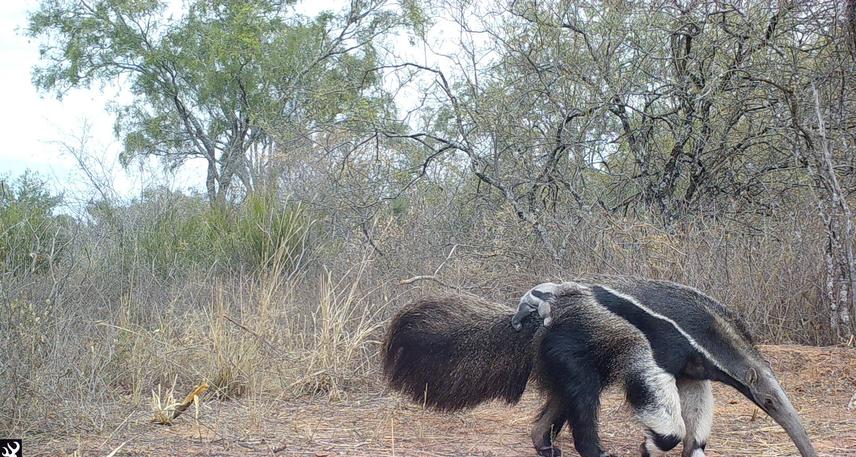Viviana Beatriz Rojas Bonzi
Protected areas are cornerstones of biodiversity conservation. Yet, growing evidence shows widespread species decline within protected areas linked to weak actions to tackle human pressure. Pressures outside protected areas, such as habitat loss, coupled with poor management within these areas, can facilitate hunting inside protected areas, and reduce their conservation effectiveness. In developing countries, 60% of protected areas have recognized hunting as their largest conservation challenge. Throughout Latin America, protected areas have limited ability to respond to this challenge, beginning with inadequate baselines for evaluating and curbing hunting.

Camera trap record of anteater in one protected area.
Despite the urgency of reducing hunting in protected areas, adequate evaluations of hunting impacts are scarce because wildlife data and accurate hunting data are rarely collected simultaneously and at a scale required for effective management decisions. Furthermore, the large body of literature on hunting has relied on indirect methods (i.e., records of human presence or proxies of human accessibility) to assess hunting pressure. However, indirect approaches can underestimate hunting pressure in protected areas by over 900% in comparison to emerging technologies such as acoustic monitors that directly estimate hunting pressure by recording gunshots.
My research will be conducted in the Dry Chaco forests of western Paraguay, which comprises 22% of Gran Chaco ecoregion and approximately 60% of Paraguay’s total land area. This region, and the Dry Chaco in general, is undergoing rapid land use change primarily to provide pasture for cattle ranching. Between 1987 and 2020, Paraguay lost 34% of its Chaco forests. Approximately 24.7% of the Paraguayan Chaco is currently under a conservation regime, as part of the National System of Protected Areas, but limited wildlife research or monitoring occurs in these protected areas. My research aims to address challenges related to protected areas in the Dry Chaco of Paraguay and fills two key gaps: a) the absence of accurate estimates of the spatial extent and intensity of hunting within protected areas and, b) lack of assessments of the impacts of hunting on vulnerable taxa at the scale required for effective conservation interventions.
Header: White-lipped peccaries in protected area in the Paraguayan Chaco. © A. Camps.